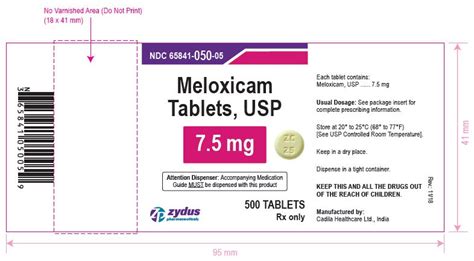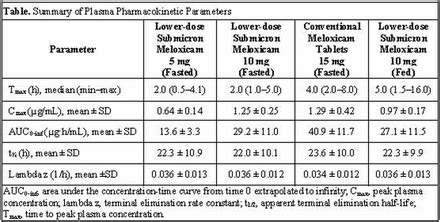Intro
Discover potential Meloxicam side effects, including gastrointestinal risks, allergic reactions, and liver damage, and learn about dosage, interactions, and warnings to minimize adverse effects.
Meloxicam is a nonsteroidal anti-inflammatory drug (NSAID) commonly used to treat pain, inflammation, and stiffness in conditions such as osteoarthritis, rheumatoid arthritis, and juvenile rheumatoid arthritis. While meloxicam can be an effective medication for managing these conditions, it is essential to be aware of the potential side effects associated with its use. In this article, we will delve into the importance of understanding meloxicam side effects, the benefits and risks of using this medication, and provide practical information to help individuals make informed decisions about their treatment.
The use of meloxicam and other NSAIDs has been a topic of interest in recent years due to concerns about their safety and potential side effects. As with any medication, it is crucial to weigh the benefits of using meloxicam against the potential risks and to be aware of the possible side effects that may occur. By understanding the potential side effects of meloxicam, individuals can take steps to minimize their risk and ensure safe and effective treatment.
Meloxicam is a popular medication due to its ability to provide relief from pain and inflammation. However, it is not without its risks, and individuals should be aware of the potential side effects that may occur. Some common side effects of meloxicam include gastrointestinal issues such as stomach upset, nausea, and diarrhea, as well as dizziness, headache, and fatigue. In rare cases, more severe side effects can occur, such as stomach ulcers, kidney damage, and increased risk of heart attack or stroke.
Meloxicam Side Effects: An Overview

Common Meloxicam Side Effects
The most common meloxicam side effects include: * Gastrointestinal issues such as stomach upset, nausea, and diarrhea * Dizziness and lightheadedness * Headache and fatigue * Insomnia and sleep disturbances * Rash and itchingMeloxicam Benefits and Risks

Meloxicam Working Mechanism
Meloxicam works by blocking the production of prostaglandins, which are chemicals in the body that cause pain and inflammation. By reducing the production of prostaglandins, meloxicam can help to reduce pain and inflammation and improve symptoms of conditions such as osteoarthritis and rheumatoid arthritis.Meloxicam Dosage and Administration

Meloxicam Interactions
Meloxicam can interact with other medications, including blood thinners, diabetes medications, and blood pressure medications. It is essential to inform your healthcare provider of all medications you are taking before starting meloxicam.Meloxicam Precautions and Warnings

Meloxicam Pregnancy and Breastfeeding
Meloxicam is not recommended for use during pregnancy or breastfeeding, as it can cause harm to the fetus or baby. Women who are pregnant or breastfeeding should inform their healthcare provider before taking meloxicam.Meloxicam Overdose and Withdrawal

Meloxicam Alternatives
Individuals who experience side effects or are concerned about the risks associated with meloxicam use may consider alternative medications or treatments. Alternative medications include other NSAIDs, corticosteroids, and biologics, while alternative treatments include physical therapy, acupuncture, and lifestyle modifications.Meloxicam Conclusion and Recommendations

We invite you to share your thoughts and experiences with meloxicam in the comments below. Have you taken meloxicam for pain or inflammation? What were your experiences with the medication? Do you have any questions or concerns about meloxicam use? Share your comments and let's start a conversation.
What is meloxicam used for?
+Meloxicam is used to treat pain, inflammation, and stiffness in conditions such as osteoarthritis, rheumatoid arthritis, and juvenile rheumatoid arthritis.
What are the common side effects of meloxicam?
+The most common side effects of meloxicam include gastrointestinal issues, dizziness, headache, and fatigue.
Can I take meloxicam during pregnancy or breastfeeding?
+No, meloxicam is not recommended for use during pregnancy or breastfeeding, as it can cause harm to the fetus or baby.
What are the alternatives to meloxicam?
+Alternative medications include other NSAIDs, corticosteroids, and biologics, while alternative treatments include physical therapy, acupuncture, and lifestyle modifications.
How long does it take for meloxicam to start working?
+Meloxicam can start working within a few hours of taking the medication, but it may take several days or weeks to achieve its full effect.
